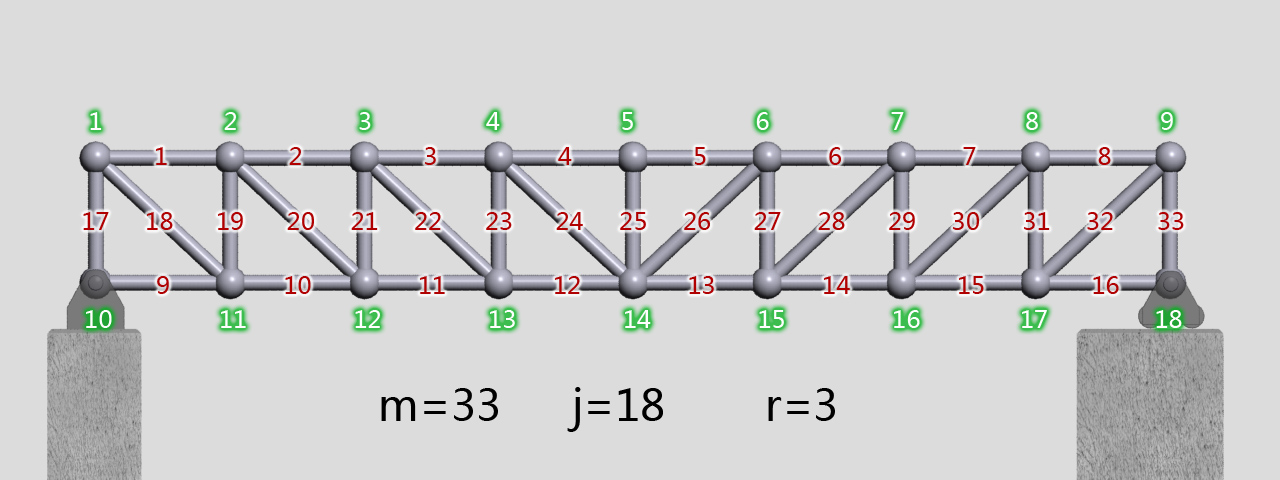| Home | Module 1 | Module 2 | Tutorials | Credits | Contact Us |
<<Back to the Previous Page <<Fundamentals <<Knowledgebase Fundamentals |
||
Determinate and Indeterminate Spatial Structures and Trusses Maxwell Equation Using the “Joint Method” we can write three equilibrium equations for each joint of a pin-connected spatial structure, therefore, we have ‘3j’ total number of equations (j = number of joints). As the members are pin-connected and the spatial structure is loaded at its joints only, there are a total of ‘3m’ unknown internal axial forces (m = number of members). If the number of unknown support reactions is ‘r’, the total number of unknown forces to compute for the entire structure is ‘m+r’. Therefore, for a pin-connected spatial structure with loads acting at its joints:
It is important to note that the stability versus instability condition mentioned here is only a “necessary” and not “sufficient” condition. This means that if m < 3j-r, the structure is unstable. However, we may have structures with m ≥ 3j-r that are still unstable. To understand this better, consider the case of a two-dimensional (plane) truss. For this structure, the above conditions are changed as the total number of equations is ‘2j’ (two equations for each joint):
Consider the following Pratt truss:
m=33, j=18, r=3 ==> 2j-r = 2(18)-3 = 33 and m = 33
In this case j, m, and r have not changed, therefore, the structure seems to be stable and determinate. However, since the truss is not triangulated it is unstable. From this example it is clear that the stability requirements given above are only ‘necessary’ but not ‘sufficient’ conditions.
|
© 2011 Virginia Polytechnic Institute and State University
